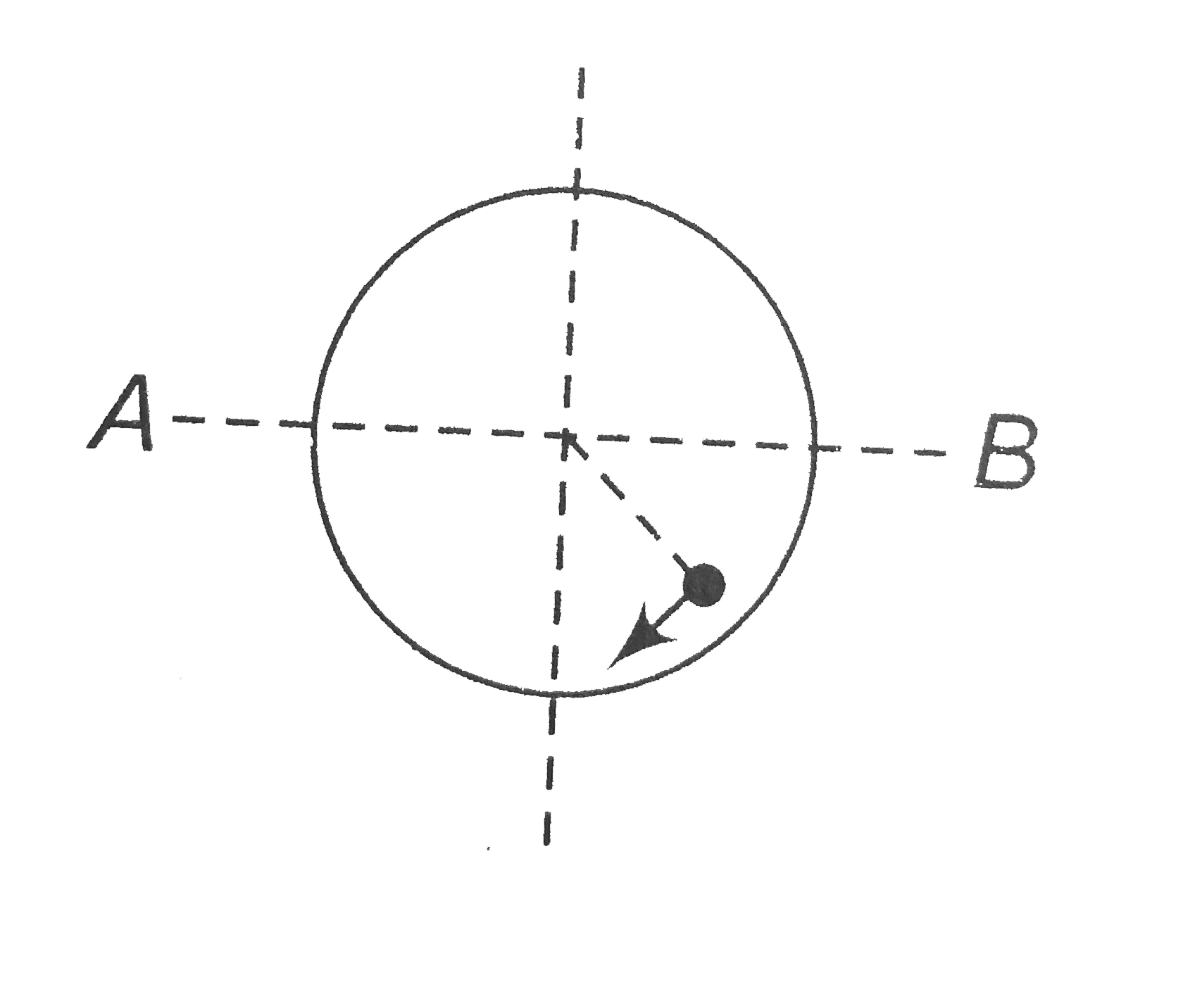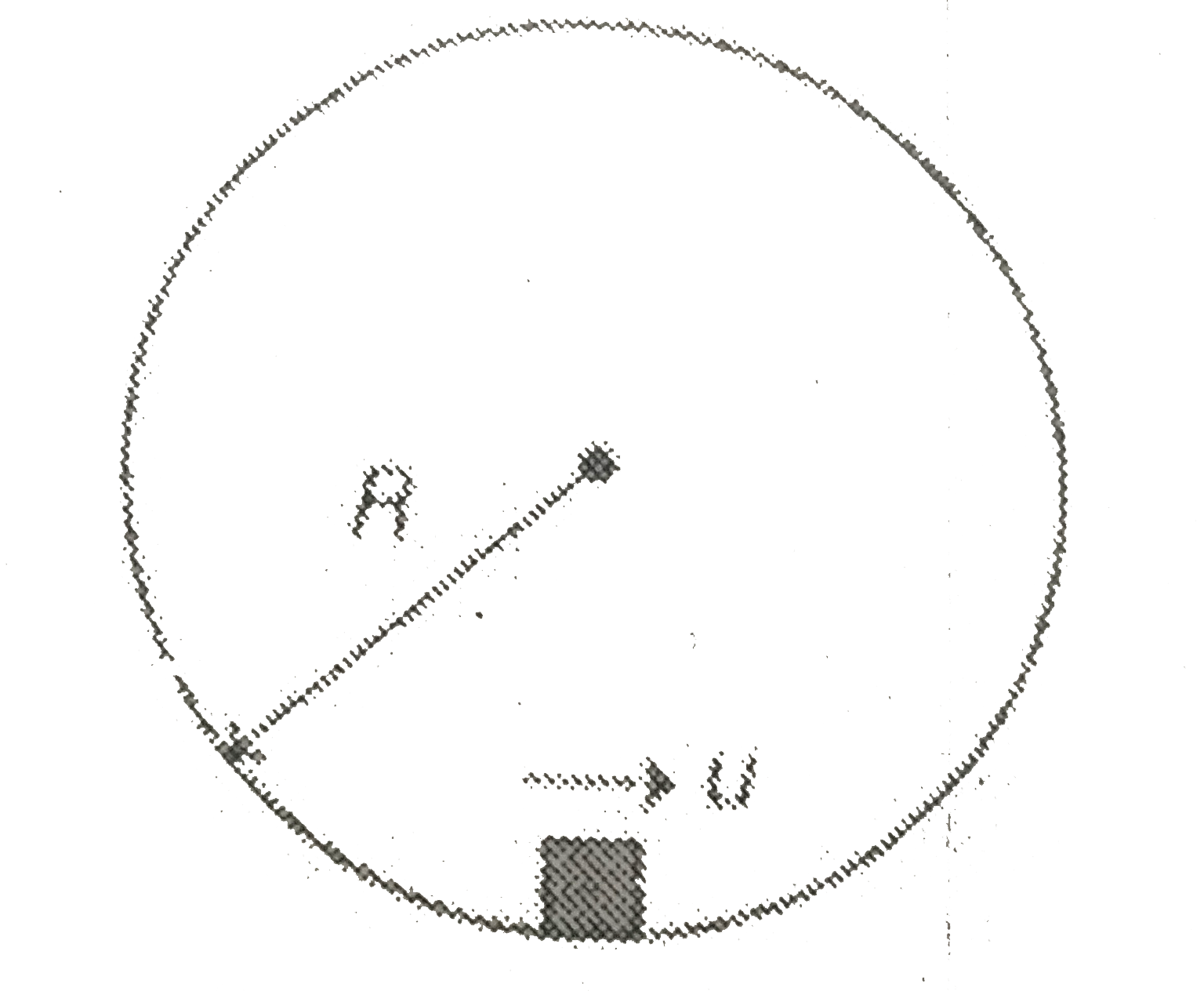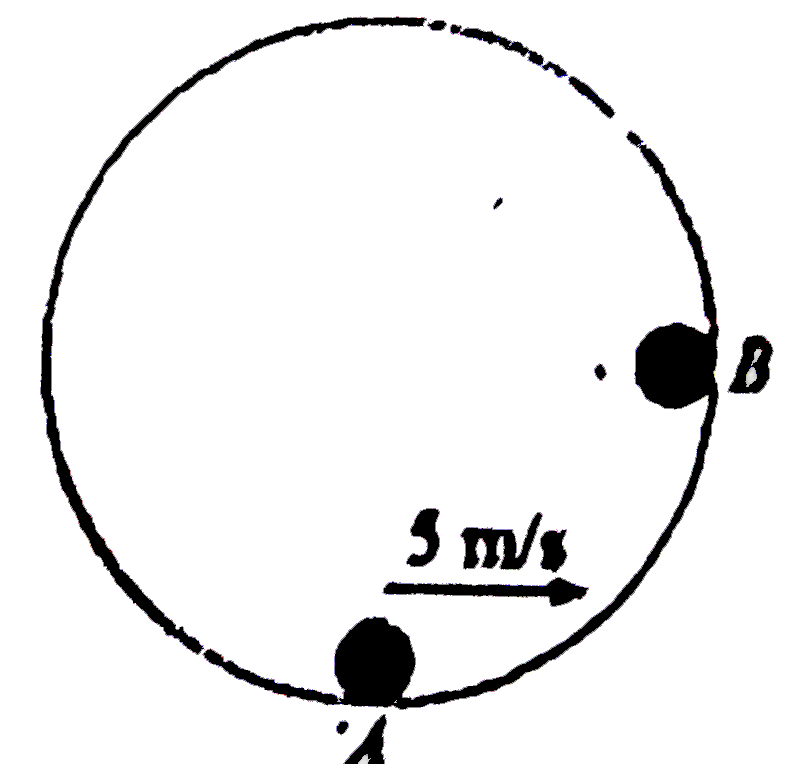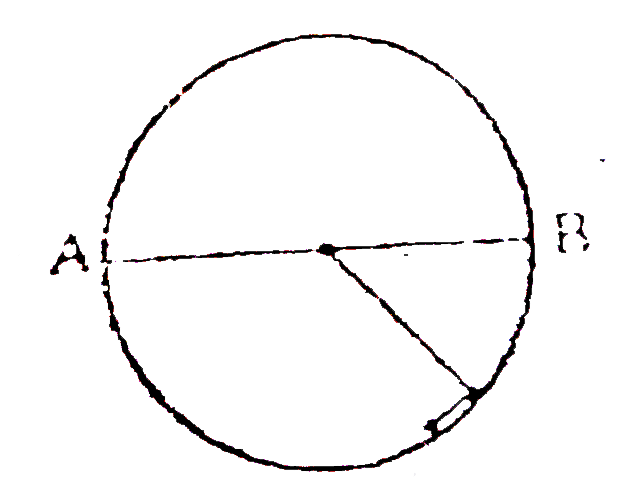A particle is given an initial speed inside a fixed smooth spherical shell of radius 1 m such that just able to complete the vertical circle acceleration of particle at instant when velocity becomes perpendicular to initial (initially particle at the bottom)
√2g
√5g
√10g
g
To solve the problem step by step, we need to analyze the motion of a particle inside a smooth spherical shell when it is given an initial speed to just complete a vertical circle.
Step 1: Understand the Initial Conditions
The particle starts at the bottom of the spherical shell with an initial speed U. The radius of the shell is given as R=1m.
Step 2: Determine the Velocity at the Point of Interest
We need to find the velocity of the particle when it is at the point where its velocity becomes perpendicular to the initial velocity. This occurs when the particle has traveled a distance equal to the radius of the shell vertically upwards.
Using the equation of motion:
V2=U2−2gS
where:
- V is the final velocity,
- U is the initial velocity,
- g is the acceleration due to gravity,
- S is the distance traveled (which is equal to R).
Substituting S=R=1m:
V2=U2−2g(1)
V2=U2−2g
Step 3: Find the Condition for Completing the Circle
For the particle to just complete the vertical circle, at the top of the circle, the minimum velocity Vt required is given by:
V2t=gR
Substituting R=1m:
V2t=g
Step 4: Relate Initial Speed to Final Speed
Since the particle starts at the bottom and we need to find the initial speed U such that it can reach the top with the minimum speed Vt:
V2=U2−2g
At the top of the circle, we set V2=g:
g=U2−2g
Rearranging gives:
U2=3g
Step 5: Calculate the Velocity at the Point of Interest
Now substituting U2 back into the equation for V2:
V2=3g−2g=g
Thus, at the point where the velocity is perpendicular to the initial velocity:
V=√g
Step 6: Calculate the Centripetal and Radial Acceleration
1. Centripetal Acceleration ac:
ac=V2R=g1=g
2. Radial Acceleration ar:
The radial acceleration due to gravity acting downwards is g.
Step 7: Calculate the Net Acceleration
The net acceleration A can be calculated using the Pythagorean theorem:
A=√a2c+a2r=√g2+g2=√2g2=g√2
Conclusion
Thus, the net acceleration of the particle at the instant when its velocity becomes perpendicular to the initial velocity is:
A=g√2
The particle starts at the bottom of the spherical shell with an initial speed U. The radius of the shell is given as R=1m.
We need to find the velocity of the particle when it is at the point where its velocity becomes perpendicular to the initial velocity. This occurs when the particle has traveled a distance equal to the radius of the shell vertically upwards.
V2=U2−2gS
where:
- V is the final velocity,
- U is the initial velocity,
- g is the acceleration due to gravity,
- S is the distance traveled (which is equal to R).
V2=U2−2g(1)
V2=U2−2g
For the particle to just complete the vertical circle, at the top of the circle, the minimum velocity Vt required is given by:
V2t=gR
Substituting R=1m:
V2t=g
Since the particle starts at the bottom and we need to find the initial speed U such that it can reach the top with the minimum speed Vt:
V2=U2−2g
At the top of the circle, we set V2=g:
g=U2−2g
Rearranging gives:
U2=3g
Now substituting U2 back into the equation for V2:
V2=3g−2g=g
Thus, at the point where the velocity is perpendicular to the initial velocity:
V=√g
1. Centripetal Acceleration ac:
ac=V2R=g1=g
The radial acceleration due to gravity acting downwards is g.
The net acceleration A can be calculated using the Pythagorean theorem:
A=√a2c+a2r=√g2+g2=√2g2=g√2
Thus, the net acceleration of the particle at the instant when its velocity becomes perpendicular to the initial velocity is:
A=g√2
Similar Questions
A particle is projected with velocity u at angle θ with horizontal. Find the time when velocity vector is perpendicular to initial velocity vector.
View SolutionA particle of mass m oscillates along the horizontal diameter AB inside a smooth spherical shell of radius R. At any instant K.E. of the partical is K. Then force applied by particle on the shell at this instant is:

View Solution
Knowledge Check
A particle is given an initial speed u inside a smooth spherical shell of radius R=1 m such that it is just able to complete the circle. Acceleration of the particle when its velocity is vertical is
 Ag√10BgCg√2D3g
Ag√10BgCg√2D3gA particle is given an initial speed u inside a smooth spherical shell of radius R so that it is just able to complete the circle. Acceleration of the particle, when its velocity is vertical, is
 Ag√10BgCg√2Dg√6
Ag√10BgCg√2Dg√6A ball of mass 1 kg moves inside a smooth fixed spherical shell of radius 1 m with an initial velocity v=5m/s from the bottom. What is the total force acting on the particle at point B
 A10 NB25 NC5√5 ND5 N
A10 NB25 NC5√5 ND5 N
In a vertical circle of radius r , at what point in its path a particle has tension equal to zero if it is just able to complete the vertical circle
View SolutionA particle is moving on a circle of radius A .At an instant its speed and tangential acceleration are B and C respectively.Total acceleration of the particle at that instant is
View SolutionA particle of mass m oscillates inside a smooth spherical shell of radius R and starts its motion from point B. At given instant the kinetic energy of the particle is K. Then the force applied by particle on the shell at this instant is :−

View SolutionA particle moves with constant speed v along a circular path of radius r and completes the circle in time T. The acceleration of the particle is
View SolutionA particle is projected with a velocity u making an angle θ with the horizontal. At any instant its velocity becomes v which is perpendicular to the initial velocity u. Then v is
View Solution
